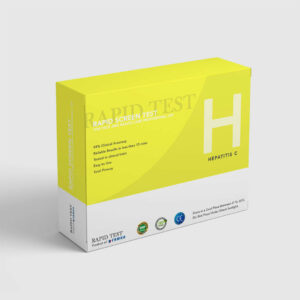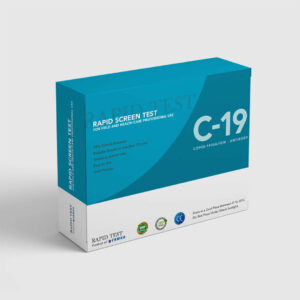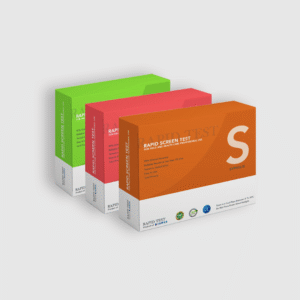Description
Hepatitis B is a liver disease that can range from mild to a serious, lifelong illness. The hepatitis B virus causes inflammation of the liver, which may lead to liver cancer, liver failure and even death. There are two stages to the disease: Acute and chronic.
- >98% Accuracy
- Reliable Results in less than 15 min
- Tested in clinical trials
- Certifications: TUV ISO 13485 (ISO’s International Medical Devices Standard) & GMP
- Easy to Use
- Total Privacy
This is an antigen test which tests directly for the presence of the Hepatitis B virus in the human body.
The test is safe: the substances contained in the test device are non-infectious.
Hepatitis B is a liver disease that can range from mild to a serious, lifelong illness. The hepatitis B virus causes inflammation of the liver, which may lead to liver cancer, liver failure and even death. There are two stages to the disease: Acute and chronic.
Acute hepatitis B infection
The early stage (first 6 months) of a hepatitis B infection is called the acute stage and is manageable. Acute hepatitis B can range from mild illness with very few or no symptoms to a serious condition that may require hospitalisation. Some people are able to fight the infection and cure the virus during the early stages.
Chronic hepatitis B infection
The later stage of the hepatitis B infection (longer than 6 months) is known as chronic hepatitis B. This chronic stage is more serious and may cause lifelong health problems. Hepatitis B cannot only affect adults, but babies and children as well. Left untreated, hepatitis B infections can lead to serious health problems.
SYMPTOMS
- Jaundice
- Light coloured poop
- Fever
- Fatigue
- Nausea, loss of appetite, vomiting and cramps.
1-6 months or 56 – 77 days incubation period
6 weeks for the window period
Package Contents
- Test Casset
- Alcohol Wipe
- Lancet
- Dropper
- Buffer
- Package Insert
How to take the Test
- Wash the patient’s hands with soap and warm water or clean with an alcohol swab.
- Allow to dry.
- Massage the hand without touching the puncture site by rubbing down the hand towards the fingertip of the middle or ring finger.
- Puncture the skin with a sterile lancet, wipe away the first sign of blood.
- Gently rub the hand from wrist to palm to finger to form a rounded drop of blood over the puncture site.
- Add the fingerstick Whole Blood specimen to the test by using a capillary tube (Pipette): fill the capillary tube with the blood until filled to approximately 75µl.
- Place the bulb onto the top end of the capillary tube, then squeeze the bulb to dispense the whole blood to the specimen area of the test cassette.
- Whole blood collected by fingerstick should be tested immediately.
Reading the Results
POSITIVE: Two distinct colored lines appear. One colored line should be in the control region (C) and another colored line should be in the test region (T).
*NOTE: The intensity of the color in the test line region (T) will vary depending on the concentration of HBsAg present in the specimen. Therefore, any shade of color in the test region (T) should be considered positive.
NEGATIVE: One colored line appears in the control region (C). No apparent colored line appears in the test region (T).
INVALID: Control line fails to appear. Insufficient specimen volume or incorrect procedural techniques are the most likely reasons for control line failure. Review the procedure and repeat the test with a new test cassette. If the problem persists, discontinue using the test kit immediately and contact your local distributor.





